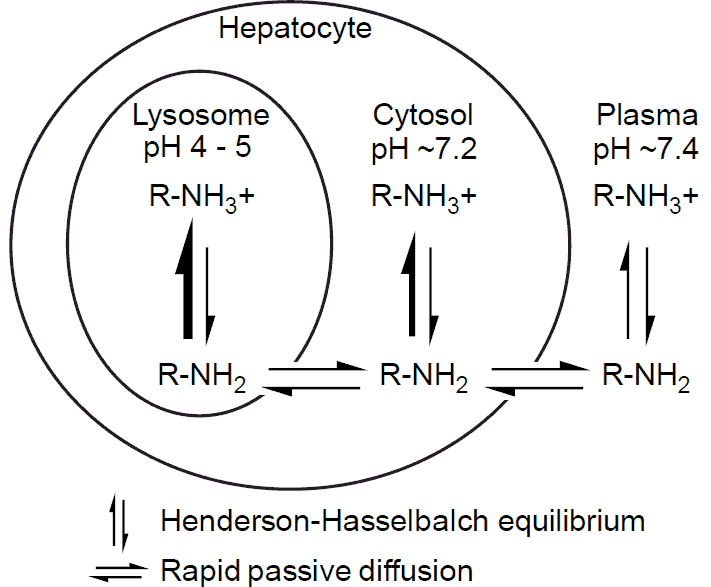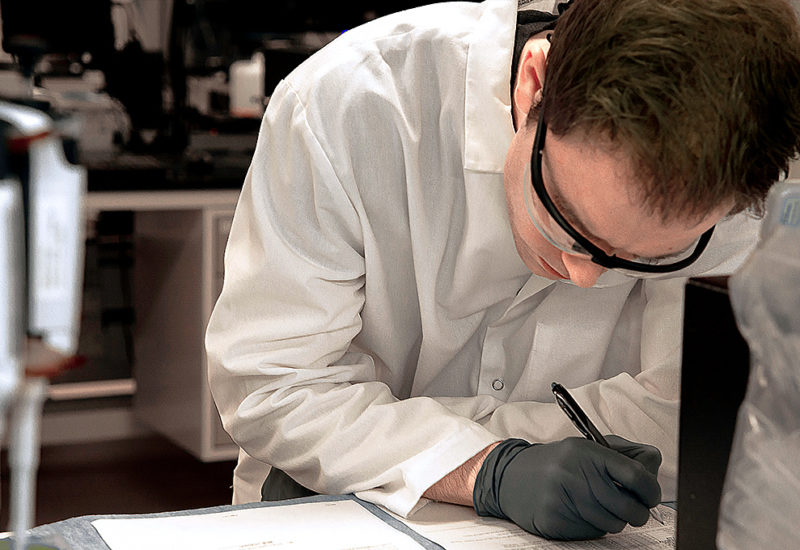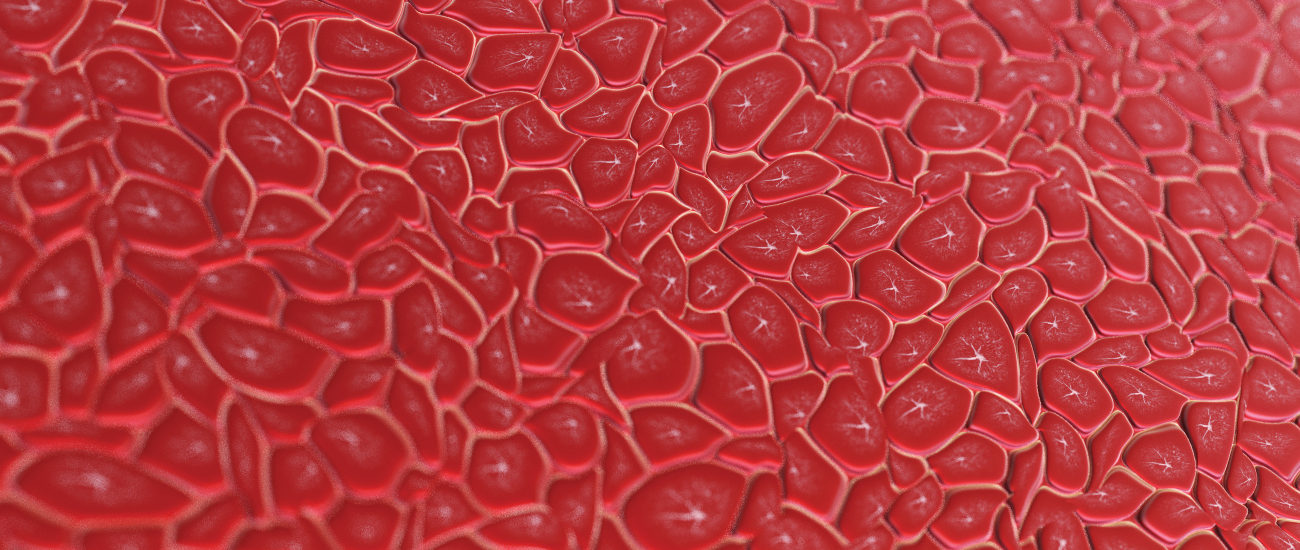
In Vitro Lysosomal Trapping (Sequestration) Studies
Lysosomal Trapping (or sequestration) is a physicochemical (non-enzymatic and non-transporter mediated) process by which membrane-bound organelles within hepatocytes can sequester lipophilic amine drugs, potentially limiting clearance and reducing therapeutic effect.
We offer an in vitro definitive study designed to evaluate inhibition and uptake (mechanistic determination) to predict lysosomotropic behavior to better assess risk impacted by pharmacokinetics, drug-drug interactions (DDIs), and other safety parameters.

Our Approach to Lysosomal Trapping Studies in Support of Preclinical Drug Development
If your drug candidate is lipophilic or amphiphilic with ionizable amines, you should consider investigating lysosomal trapping potential because lysosomal trapping (in conjunction with phospholipid binding in tissues) can cause many cationic drugs to exhibit large volumes of distribution and high liver-to-blood ratios. While lipophilic amine drugs readily diffuse across cell membranes at physiological pH by passive diffusion, upon diffusion into lysosomes, they become protonated (positively charged), which restricts their diffusion back across the lysosomal membrane into the cytosolic space.
Competition for lysosomal trapping has been the subject of some speculation as a potential mechanism of DDIs. As many CNS and cardiovascular drugs are lysosomotropics (drugs that undergo lysosomal sequestration) there is the possibility that concomitant administration of lysosomotropics could lead to elevated drug exposure levels as competition for lysosomal sequestration increases or lysosomal pH is elevated by virtue of amine accumulation. Furthermore, compounds that accumulate in lysosomes have a strong association with the development of drug-induced phospholipidosis, characterized by the excess accumulation of phospholipids.
Assays to Determine Lysosomal Activity, Inhibition IC50 and Mechanistic Action
Test System
As the liver is a lysosome rich organ, we use immortalized hepatocytes (Fa2N-4) as the in vitro test system to evaluate lysosomal trapping of lipophilic amine drugs. These cells make an ideal test system because they are transformed human hepatocytes that do not retain significant metabolism or transporter activity, but do propagate in culture and readily attach to collagen plates.
Evaluation of Lysosomal Trapping with LysoTracker Red
The fluorescent probe Red DND-99 (also known as LysoTrackerTM Red), has been shown to be highly specific for lysosomal accumulation and has been used in numerous non-hepatic cell lines. Co-incubation with lysosomotropic compounds will block the accumulation of LysoTrackerTM Red.
- Fa2N-4 cells plated in a 96-well plate as a test system
- LysoTrackerTM Red used as the fluorescent probe
- Seven test article concentrations
- Test article and LysoTrackerTM Red are incubated for 30 min concurrently
- LDH release assay is used for cytotoxicity testing
- Samples are analyzed on a fluorescent plate reader
- Data are presented as LysoTrackerTM Red inhibition IC50 curves
Evaluation of Lysosomal Trapping by Measuring Cellular Partitioning
Our scientists can also perform mechanistic experiments to provide more detailed information on the propensity of a compound to be trapped in lysosomes.
- Plated Fa2N-4 cells are incubated with the test article
- Test article quantified by LC-MS
- Test article partitioning (uptake) into cells determined
- Treatment with ammonium choride or a lysosomotropic compound is used to determine partitioning into lysosomes
- Studies customized to fit your needs
The table below represents predicted physicochemical properties and experimentally-determined LysoTrackerTM Red IC50 values for 27 compounds (adapted from Kazmi et al., 2013).
*Note: All physicochemical properties were calculated with MarvinSketch 5.9.0 as described in the Materials and Methods; compounds that showed >25% LysoTrackerTM Red inhibition at the highest tested concentration but did yield an IC50 value or exhibited concentration-dependent cytotoxicity were classified as ‘Possible’ for undergoing lysosomal sequestration; LDH is lactate dehydrogenase; SSRI is selective serotonin reuptake inhibitor; NSAID is non-steroidal anti-inflammatory drug; PSA is polar surface area.
Molecular Species: Acid
| Drug | Drug Class | LogP | logDph7.4 | PSA(A2) | Acidic or anionic pKa | Basic or cationic pKa | LysoTracker Red IC50(μM) | Cytotxicity (LDH release) | EVIDENCE FOR LYSOSOMAL TRAPPING |
|---|---|---|---|---|---|---|---|---|---|
| Diclofenac | NSAID | 4.26 | 1.10 | 49.33 | 4.00 | – | >500 | Little or none | None |
| Ibuprofen | NSAID | 3.84 | 1.34 | 37.30 | 4.85 | – | >500 | Little or none | None |
| Ketaprofen | NSAID | 3.61 | 0.39 | 54.37 | 3.88 | – | >500 | Little or none | None |
| Keterolac | NSAID | 2.28 | -0.96 | 59.30 | 3.84 | – | >500 | Little or none | None |
| Tenoxicam | NSAID | 0.34 | -0.71 | 99.60 | 3.63, 7.21 | 4.78 | >500 | Little or none | None |
| Atorvastatin | Statin | 5.39 | 2.44 | 111.79 | 4.33, 11.82 | – | >500 | Little or none | None |
| Fluvastatin | Statin | 3.83 | 1.06 | 82.69 | 4.56 | – | >500 | Little or none | None |
| Pravastatin | Statin | 1.65 | 1.38 | 124.29 | 4.21 | – | >500 | Little or none | None |
| Rosuvastatin | Statin | 1.92 | 1.24 | 140.92 | 4.00 | – | >500 | Little or none | None |
Molecular Species: Base
| Drug | Drug Class | LogP | logDph7.4 | PSA(A2) | Acidic or anionic pKa | Basic or cationic pKa | LysoTracker Red IC50(μM) | Cytotxicity (LDH release) | EVIDENCE FOR LYSOSOMAL TRAPPING |
|---|---|---|---|---|---|---|---|---|---|
| Fluoxetine | Anitdepressant (SSRI) | 4.17 | 1.83 | 21.26 | – | 9.80 | 150 | Little or none | Yes |
| Paroxetine | Anitdepressant (SSRI) | 3.15 | 0.83 | 39.72 | – | 9.77 | 130 | Little or none | Yes |
| Desipramine | Antidepressant (Tricyclic) | 3.90 | 1.37 | 15.27 | – | 10.02 | 220 | Little or none | Yes |
| Imipramine | Antidepressant (Tricyclic) | 4.28 | 2.48 | 6.48 | – | 9.20 | 260 | Little or none | Yes |
| Astemizole | Antihistamine | 5.39 | 3.97 | 42.32 | – | 6.54, 8.75 | 110 | Yes | Possible |
| Amodiaquine | Antimalarial | 4.53 | 2.24 | 48.39 | 9.12 | 6.46, 10.23 | >500 | Little or none | Possible |
| Chloroquine | Antimalarial | 3.93 | 0.88 | 28.16 | – | 7.29, 10.32 | 220 | Little or none | Yes |
| Dextromethorphine | Antitussive | 3.49 | 1.08 | 12.47 | – | 9.85 | >500 | Little or none | Possible |
| Labetalol | Beta Blocker | 2.97 | 1.26 | 95.58 | 8.05 | 9.80 | >500 | Little or none | Possible |
| Propranolol | Beta Blocker | 2.58 | 0.36 | 41.49 | – | 9.67 | 92 | Little or none | Yes |
Molecular Species: Neutral
| Drug | Drug Class | LogP | logDph7.4 | PSA(A2) | Acidic or anionic pKa | Basic or cationic pKa | LysoTracker Red IC50(μM) | Cytotxicity (LDH release) | EVIDENCE FOR LYSOSOMAL TRAPPING |
|---|---|---|---|---|---|---|---|---|---|
| Acetaminophen | Analgesic | 0.91 | 0.90 | 49.33 | 9.46 | – | >500 | Little or none | None |
| Erlotinib | Anticancer | 3.20 | 3.20 | 74.73 | – | 4.59 | >500 | Little or none | None |
| Gefitinib | Anticancer | 3.75 | 3.64 | 68.74 | – | 4.51, 6.85 | 77 | Little or none | Yes |
| Lapatinib | Anticancer | 4.64 | 4.43 | 106.35 | – | 3.80, 7.20 | 380 | Yes | Possible |
| Fluconazaole | Antifungal antibiotic | 0.56 | 0.56 | 81.65 | 12.71 | 1.96. 2.56 | >500 | Little or none | None |
| Nifedipine | Calcium channel blocker | 1.82 | 1.81 | 110.45 | – | 3.89 | >500 | Little or none | None |
Molecular Species: Zwitterion
| Drug | Drug Class | LogP | logDph7.4 | PSA(A2) | Acidic or anionic pKa | Basic or cationic pKa | LysoTracker Red IC50(μM) | Cytotxicity (LDH release) | EVIDENCE FOR LYSOSOMAL TRAPPING |
|---|---|---|---|---|---|---|---|---|---|
| Cetirizine | Antihistamine | 3.58 | 0.74 | 53.01 | 3.60 | 2.12, 7.79 | >500 | Little or none | None |
| Raclopride | Antipsychotic | 3.29 | 2.03 | 61.80 | 6.26 | 8.47 | >500 | Little or none | None |

